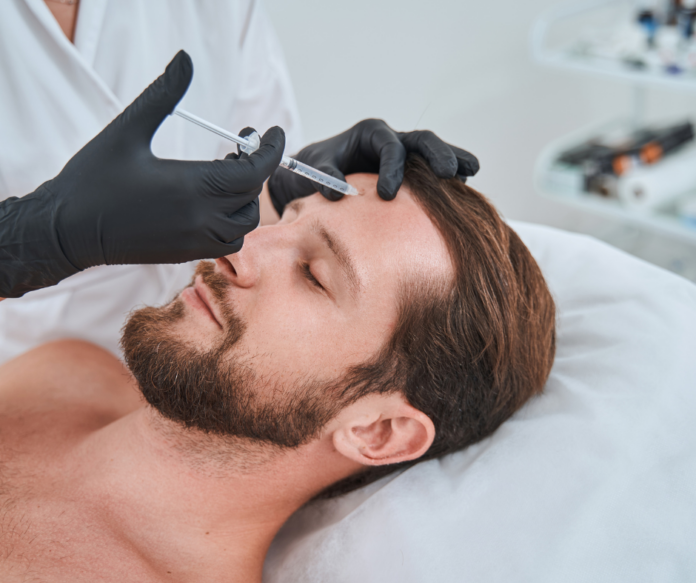
Understanding the Side Effects of Dermal Fillers in the Forehead
Introduction to Dermal Fillers
Dermal fillers are a popular non-surgical cosmetic treatment that can help to restore volume and smooth out wrinkles in the face. They are commonly used in the forehead area to address concerns such as frown lines, forehead lines, as well as volume loss. While dermal fillers can provide impressive results, it’s essential to understand the potential side effects. And also the risks associated with this treatment. In this article, we will discuss the side effects of dermal fillers in the forehead, as well as provide solutions and recommendations for those considering this treatment.
What are Dermal Fillers?
Dermal fillers are injectable substances that are used to fill in wrinkles, lines, and also hollow areas in the face. They are made from various materials, including hyaluronic acid, calcium hydroxylapatite, as well as poly-L-lactic acid. These substances are designed to mimic the natural components of the skin, providing a more youthful appearance. Dermal fillers are typically administered by a qualified medical professional, such as a dermatologist or plastic surgeon. [Link to medical resources: American Society of Plastic Surgeons]
Common Side Effects of Dermal Fillers in the Forehead
While dermal fillers are generally considered safe, there are some potential side effects that patients should be aware of. These side effects can range from mild to severe, and also may include:
1. Pain, swelling, and redness: These are the most common side effects of dermal fillers and are usually mild and also temporary. They typically resolve within a few days of the treatment. Applying ice to the treated area can help to reduce swelling and discomfort.
2. Bruising: Some patients may experience bruising at the injection site. This is usually mild and will fade within a week or two. To minimize the risk of bruising, patients should avoid taking blood-thinning medications, such as aspirin or ibuprofen, for at least a week before the treatment.
3. Infection: Although rare, there is a risk of infection following dermal filler injections. To reduce this risk, it’s essential to choose a reputable provider as well as follow all aftercare instructions provided by your medical professional.
4. Lumps or nodules: In some cases, patients may develop lumps or nodules under the skin at the injection site. These can usually be resolved by massaging the area or, in more severe cases, through additional treatment by your medical professional.
5. Asymmetry: There is a risk that the results of the dermal filler treatment may be uneven or asymmetrical. This can usually be corrected by additional treatment or by waiting for the filler to naturally dissolve over time.
6. Allergic reaction: Some patients may experience an allergic reaction to the dermal filler material. This is rare but can cause symptoms such as itching, redness, and swelling. If you have a history of allergies, it’s essential to discuss this with your medical professional before undergoing treatment.
7. Vascular occlusion: This is a rare but serious side effect that occurs when the dermal filler is accidentally injected into a blood vessel. This can cause tissue damage and, in severe cases, skin necrosis (tissue death). If you experience severe pain, skin discoloration, or other unusual symptoms after your treatment, contact your medical professional immediately.
How to Minimize the Risk of Side Effects
To minimize the risk of side effects from dermal fillers in the forehead, it’s essential to choose a qualified and experienced medical professional to perform the treatment. They should have a thorough understanding of facial anatomy and be able to assess your individual needs and concerns. Additionally, following all aftercare instructions provided by your medical professional can help to reduce the risk of complications.
Alternatives to Dermal Fillers
If you’re concerned about the potential side effects of dermal fillers, there are alternative treatments available that can help to address forehead wrinkles and volume loss. These may include:
1. Botox: This is a popular injectable treatment that works by temporarily paralyzing the muscles responsible for wrinkles and lines. Botox can be an effective option for treating forehead lines and frown lines.
2. Chemical peels: These treatments use a chemical solution to remove the outer layer of skin, revealing a smoother, more youthful complexion. Chemical peels can help to reduce the appearance of fine lines and wrinkles in the forehead area.
3. Laser resurfacing: This treatment uses a laser to remove the outer layer of skin and stimulate collagen production, resulting in smoother, more youthful-looking skin. Laser resurfacing can be an effective option for addressing forehead wrinkles and volume loss.
Conclusion: Side effects of dermal fillers in the forehead
Dermal fillers can be an effective treatment for addressing forehead wrinkles and volume loss, but it’s essential to be aware of the potential side effects and risks associated with this treatment. By choosing a qualified and experienced medical professional and following all aftercare instructions, you can minimize the risk of complications and enjoy a more youthful appearance. If you’re concerned about the potential side effects of dermal fillers, consider discussing alternative treatments with your medical professional to find the best option for your individual needs and concerns.



